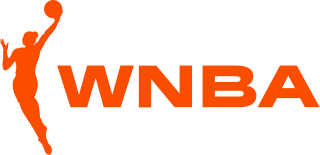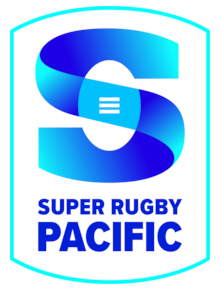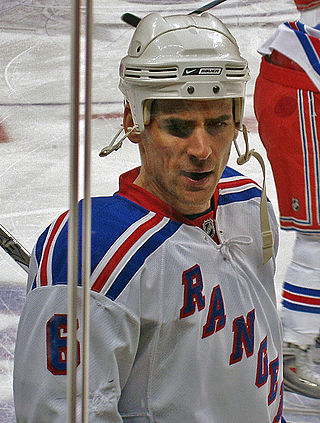
The Women's National Basketball Association (WNBA) is the premier women's professional basketball league. It is composed of 12 teams, all based in the United States. The league was founded on April 22, 1996, as the women's counterpart to the National Basketball Association (NBA), and league play started in 1997. The regular season is played from May to September, with the All Star game being played midway through the season in July and the WNBA Finals at the end of September until the beginning of October.

Major League Soccer (MLS) is a men's professional soccer league sanctioned by the United States Soccer Federation, which represents the sport's highest level in the United States. The league comprises 29 teams—26 in the United States and 3 in Canada—since the 2023 season. MLS is headquartered in Midtown Manhattan.

Super Rugby is a men's professional rugby union club competition involving teams from Australia, Fiji, New Zealand, and the Pacific Islands. It has previously included teams from Argentina, Japan, and South Africa. Super Rugby started as the Super 12 in the 1996 season with 12 teams from Australia, New Zealand, and South Africa, building on competitions dating back to the South Pacific Championship in 1986. The Super 12 was established by SANZAR after the sport became professional in 1995. After the COVID-19 pandemic forced the competition to split into three, the reformed competition in 2021 only included teams from Australia, New Zealand and the Pacific islands.
In professional sports, a salary cap is an agreement or rule that places a limit on the amount of money that a team can spend on players' salaries. It exists as a per-player limit or a total limit for the team's roster, or both. Several sports leagues have implemented salary caps, using them to keep overall costs down, and also to maintain a competitive balance by restricting richer clubs from entrenching dominance by signing many more top players than their rivals. Salary caps can be a major issue in negotiations between league management and players' unions because they limit players' and teams' ability to negotiate higher salaries even if a team is operating at significant profits, and have been the focal point of several strikes by players and lockouts by owners and administrators.

In professional sports, as opposed to amateur sports, participants receive payment for their performance. Professionalism in sport has come to the fore through a combination of developments. Mass media and increased leisure have brought larger audiences, so that sports organizations or teams can command large incomes. As a result, more sportspeople can afford to make sport their primary career, devoting the training time necessary to increase skills, physical condition, and experience to modern levels of achievement. This proficiency has also helped boost the popularity of sports. In most sports played professionally there are many more amateur than professional players, though amateurs and professionals do not usually compete.
A head coach, senior coach, or manager is a professional at training and developing athletes. They typically hold a more public profile and are paid more than other coaches. In some sports, the head coach is instead called the "manager", as in association football and professional baseball. In other sports, such as Australian rules football, the head coach is generally referred to as the senior coach.

The National Football League draft, also called the NFL draft or (officially) the Annual Player Selection Meeting, is an annual event which serves as the most common source of player recruitment in the National Football League. Each team is given a position in the drafting order in reverse order relative to its record in the previous year, which means that the last place team is positioned first and the Super Bowl champion is last. From this position, the team can either select a player or trade its position to another team for other draft positions, a player or players, or any combination thereof. The round is complete when each team has either selected a player or traded its position in the draft. The first draft was held in 1936, and has been held every year since.
A-League Men is the highest-level professional men's soccer league in Australia and New Zealand. At the top of the Australian league system, it is the country's premier men's competition for the sport. A-League Men was established in 2004 as the A-League by the Football Federation Australia (FFA) as a successor to the National Soccer League (NSL) and competition commenced in August 2005. The league is currently administered by the Australian Professional Leagues (APL), contested by twelve teams; eleven based in Australia and one based in New Zealand. The men's, women's and youth leagues have now been brought together under a unified A-Leagues banner.
In sports, the practice squad, also called the taxi squad or practice roster, is a group of players signed by a team but not part of their main roster. Frequently used in gridiron football, they serve as extra players during the team's practices, often as part of the scout team by emulating an upcoming opponent's play style. Because the players on the practice squad are familiar with the team's plays and formations, the practice squad serves as a way to develop inexperienced players for promotion to the main roster. This is particularly important for professional gridiron football teams, which do not have formal minor league farm team affiliates to train players. In addition, it provides replacement players for the main roster when players are needed as the result of injuries or other roster moves, such as bereavement leave.
The NBA salary cap is the limit to the total amount of money that National Basketball Association teams are allowed to pay their players. Like the other major professional sports leagues in North America, the NBA has a salary cap to control costs and benefit parity, defined by the league's collective bargaining agreement (CBA). This limit is subject to a complex system of rules and exceptions and is calculated as a percentage of the league's revenue from the previous season. Under the CBA ratified in July 2017, the cap will continue to vary in future seasons based on league revenues. For the 2022–23 season, the cap is set at $123.655 million.

The Australian Football League (AFL) is the pre-eminent and only fully professional competition of Australian rules football. It was originally named the Victorian Football League (VFL) and was founded in 1896 as a breakaway competition from the Victorian Football Association (VFA), with its inaugural season in 1897. It changed its name to Australian Football League in 1990 after expanding its competition to other Australian states in the 1980s. The AFL publishes its Laws of Australian football, which are used, with variations, by other Australian football organisations.

The Designated Player Rule, nicknamed the Beckham Rule, allows Major League Soccer franchises to sign up to three players that would be considered outside their salary cap. The rule, which was adopted ahead of the 2007 MLS season, enables teams to compete for star players in the international football market. The rule is one of two mechanisms by which MLS teams may exceed their salary cap, the other being allocation money. As of December 2019, there have been 209 Designated Players in league history.
A restricted free agent (RFA) is a type of free agent in the National Football League (NFL), National Hockey League (NHL), or National Basketball Association (NBA). Such players have special restrictions on the terms under which they can retain or change employment status with their athletic club teams.

Waivers is a National Hockey League (NHL) labor management procedure by which an NHL team makes a professional ice hockey player's contract and rights available to all other NHL teams. Other NHL teams "waive" any claim to a player designated for assignment in the American Hockey League (AHL) or designated for release. The process is typically referred to as "being placed on waivers." It is similar to the designated for assignment process in Major League Baseball.
A two-way contract is a professional sports contract that stipulates that an athlete's salary is dependent upon the league in which the athlete is assigned to play. This is opposed to a one-way contract that would pay the same salary regardless of where the athlete is assigned to play.
The 2011 NBA lockout was the fourth and most recent lockout in the history of the National Basketball Association (NBA). Team owners began the work stoppage upon expiration of the 2005 collective bargaining agreement (CBA). The 161-day lockout began on July 1, 2011 and ended on December 8, 2011. It delayed the start of the 2011–12 regular season from November to December, and it reduced the regular season from 82 to 66 games. The previous lockout in 1998–99 had shortened the season to 50 games. During the lockout, teams could not trade, sign, or contact players. Players additionally did not have access to NBA team facilities, trainers, or staff.
The NFL collective bargaining agreement (CBA) is a labor agreement which reflects the results of collective bargaining negotiations between the National Football League Players Association (NFLPA) and National Football League (NFL). The labor agreement classifies distribution of league revenues, sets health and safety standards and establishes benefits, including pensions and medical benefits, for all players in the NFL. The first collective bargaining agreement was reached in 1968 after player members of the NFLPA voted to go on strike to increase salaries, pensions and benefits for all players in the league. Later negotiations of the collective bargaining agreement called for injury grievances, a guaranteed percentage of revenues for players, an expansion of free agency and other issues impacting the business of the NFL. The NFLPA and team owners have negotiated seven different agreements since 1968.
Free agency in Major League Baseball (MLB) concerns players whose contracts with a team have expired and who are therefore eligible to sign with another team. Free agents may be eligible for pendulum arbitration, also called "salary arbitration" or just "arbitration" in baseball circles.







